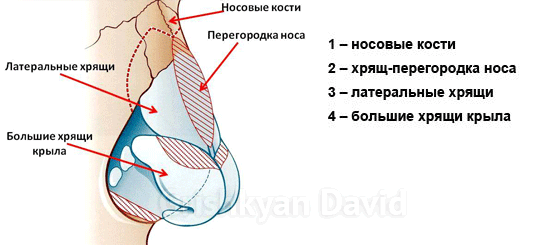Poltava, prospekt Vitaliia Hrytsaienka 9 Weekdays: 8:30-15:00, Weekend: weekend +38 (0532) 56-02-11+38 (095) 688 25 07
Poltava, prospekt Vitaliia Hrytsaienka 9 Weekdays: 8:30-15:00, Weekend: weekend +38 (0532) 56-02-11+38 (095) 688 25 07
-
-
- The plastics of the forehead, the front plastics
- Endoscopic lift forehead
- Check lift (paint lift)
- Annular facelifting and necklifting – the facelifting
- Endoscopic midface lift
- Cantoplasty
- Cantopexy
- Lift of the lower 2/3 of the face - SMAS lifting
- Plastic eyebrow
- Lift of the corners of the lips with Corner Lift operation
- Хирургический лифтинг височной зоны лица
- Eyelid surgery - blepharoplasty
-
- Operations on the body
- Surgical treatment of gynecomastia
- Intimate plasty (labiaplasty)
- Surgical treatment of hyperhidrosis
- Hymenoplasty - The restoration of virginity
- Posthetomy (Circumcision)
- Shoulder lift (brachioplasty)
- Plastic surgery of the frenum of the penis
- Installation of testicular implant
-
- Contour plastic
- Lip Injection
- Injection of hyaluronic acid (beauty injection)
- Radiesse – The preparation for facial contour correction
- Surgical correction of the shape and volume of the lips (chalinoplasty)
- Plasmolifting
- Plasma lifting for hair
- Nose contour
- Intimate contour plastic
- Contouring of cheekbones
- Chin contouring
- Correction of the nasolacrimal groove
- Correction of nasolabial folds
- Botulinum therapy for lips
- Treatment of hyperhidrosis with botulinum toxin
-
- Lipofilling
- Face lipofilling
- Lipofilling of the hands
- Lipofilling of buttocks and thighs
- Lipofilling of the legs (lower legs)
- Lipofilling of the cheekbones
- Lipofilling of nasolabial folds
- Lipofilling of lips
- Lipofilling of the middle zone of the face
- Lipofilling of the nasolacrimal groove
- Lipofilling around the eyes
- Сorrection volume and shape of the chin
- Suture lifting
- Fat body of cheek resection (Bichat’s fat body)
- Reviews
- Questions and Answers
- Price
- Contacts
Anatomical aspects and features of rhinoplasty
 Rhinoplasty is the operation aimed at making the perfect shape of the nose, emphasizing the harmony of the individual image. This manipulation includes one-step correction of all external nose sections, and the manipulation with its internal structure if necessary. Each operation has its own characteristics, and provides a reduction in the nasal structure (reduction rhinoplasty), the increasing of its projection in certain areas (augmentation rhinoplasty), correction of congenital or acquired deformities (reconstructive rhinoplasty) or restoration of breathing quality (functional rhinoplasty). The manipulation may be performed in an open or closed manner.
Rhinoplasty is the operation aimed at making the perfect shape of the nose, emphasizing the harmony of the individual image. This manipulation includes one-step correction of all external nose sections, and the manipulation with its internal structure if necessary. Each operation has its own characteristics, and provides a reduction in the nasal structure (reduction rhinoplasty), the increasing of its projection in certain areas (augmentation rhinoplasty), correction of congenital or acquired deformities (reconstructive rhinoplasty) or restoration of breathing quality (functional rhinoplasty). The manipulation may be performed in an open or closed manner.
Anatomical aspects
The anatomical structure of the nose is quite complicated. It is a pyramid built of bony and cartilaginous tissue. The organ is covered with skin on the outside and with mucous membrane on the inside. The basic external appearance of the nasal tip is being determined by the alar cartilages. The crook in the nose consists of the lateral cartilage, the nasal bones and the upper edge of the septal cartilage. These structures are often subject to change at the time of reduction rhinoplasty. 
SHADED AREAS ARE THE ZONES OF CARTILAGE EXSECTION.
Preparation for surgery
 After detailed examination, a computerized prognosis of the nose rhinoplasty expected outcome is performed during the consultation. It is necessary to achieve a full understanding of what option will suit the patient after changing the shape of the nose. An extent of forthcoming operation is being discussed. The doctor answers all the questions, informs the patient about the aspects of postoperative course, the terms of the final restoration, possible complications, informs how difficult or easy it is to perform. The patient takes a full laboratory examination and consults with the clinic’s anesthesiologist. The contract between the clinic and the patient is filled right before the procedure.
After detailed examination, a computerized prognosis of the nose rhinoplasty expected outcome is performed during the consultation. It is necessary to achieve a full understanding of what option will suit the patient after changing the shape of the nose. An extent of forthcoming operation is being discussed. The doctor answers all the questions, informs the patient about the aspects of postoperative course, the terms of the final restoration, possible complications, informs how difficult or easy it is to perform. The patient takes a full laboratory examination and consults with the clinic’s anesthesiologist. The contract between the clinic and the patient is filled right before the procedure.
The surgery
 In most cases, rhinoplasty is performed under general anesthesia. The duration depends on the planned level of manipulation and takes from 1 to 2.5 hours. In case of imperforate rhinoplasty, the incisions are made on the mucous membrane located in the nasal vestibule. In case of open rhinoplasty, an additional incision is made in the skin of columella (nasal vestibule septum). Reducing the width of the nose alae also includes a number of small external incisions. These approaches allow to carry out all the necessary extent of manipulation. The tamponade of the nasal cavity and the outer plaster cast are being applied on the surgery final stage.
In most cases, rhinoplasty is performed under general anesthesia. The duration depends on the planned level of manipulation and takes from 1 to 2.5 hours. In case of imperforate rhinoplasty, the incisions are made on the mucous membrane located in the nasal vestibule. In case of open rhinoplasty, an additional incision is made in the skin of columella (nasal vestibule septum). Reducing the width of the nose alae also includes a number of small external incisions. These approaches allow to carry out all the necessary extent of manipulation. The tamponade of the nasal cavity and the outer plaster cast are being applied on the surgery final stage.
The postoperative period
The pain is expressed minimally after surgery. The tampons are removed from the nose on the morning of the second day. Intensity of swelling and bruising around the eyes can be very individual. Wearing a plaster cast is necessary for 7-10 days (depending on the extent of manipulation). Both the external and the internal threads are being diffused by themselves. After removing the plaster, the nose already has a predetermined shape, but moderate swelling develops within a few hours. Bruises diffuse within 2 weeks by themselves. Nasal breathing is completely restored in the period of up to 1.5 months. The final recovery of rhinoplasty takes from 1 to 6 months, and also depends upon the level of manipulation and individual anatomical aspects.
specialists of the Clinic for Plastic Surgery
06-03-2017


